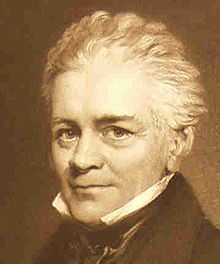William Cubitt
| Sir William Cubitt | |
|---|---|
 |
|
| Born | 1785 Norfolk |
| Died | 1861 |
| Nationality | English |
| Engineering career | |
| Discipline | Civil engineer, Millwright |
| Institutions | Institution of Civil Engineers (president) |
| Projects | The Crystal Palace Welwyn Viaduct |
| Significant design |
Patent sails for windmills Prison treadwheels |
Sir William Cubitt (1785–1861) was an eminent English civil engineer and millwright. Born in Norfolk, England, he was employed in many of the great engineering undertakings of his time. He invented a type of windmill sail and the prison treadwheel, and was employed as chief engineer, at Ransomes of Ipswich, before moving to London. He worked on canals, docks, and railways, including the South Eastern Railway and the Great Northern Railway. He was the chief engineer of Crystal Palace erected at Hyde Park in 1851.
He was president of the Institution of Civil Engineers between 1850 and 1851.
The son of Joseph Cubitt of Bacton Wood, near Dilham, Norfolk, a miller, by his wife, Miss Lubbock, he was born at Dilham and attended the village school. His father moved to Southrepps, and William at an early age was employed in the mill, but in 1800 was apprenticed to James Lyon, a cabinet-maker at Stalham, from whom he parted after four years. At Bacton Wood Mills he again worked with his father in 1804, and also constructed a machine for splitting hides. He then joined an agricultural machine maker named Cook, at Swanton, where they constructed horse threshing machines and other implements.
Cubitt became known for the accuracy and finish of his patterns for the iron castings of machines. Self-regulating windmill sails were invented and patented by him in 1807, at which period he settled at Horning, Norfolk, in business as a millwright. He in 1812 sought and obtained an engagement in the works of Messrs. Ransome of Ipswich, where he soon became the chief engineer. For nine years he held this situation, and then became a partner in the firm, a position which he held until he moved to London in 1826.
...
Wikipedia
